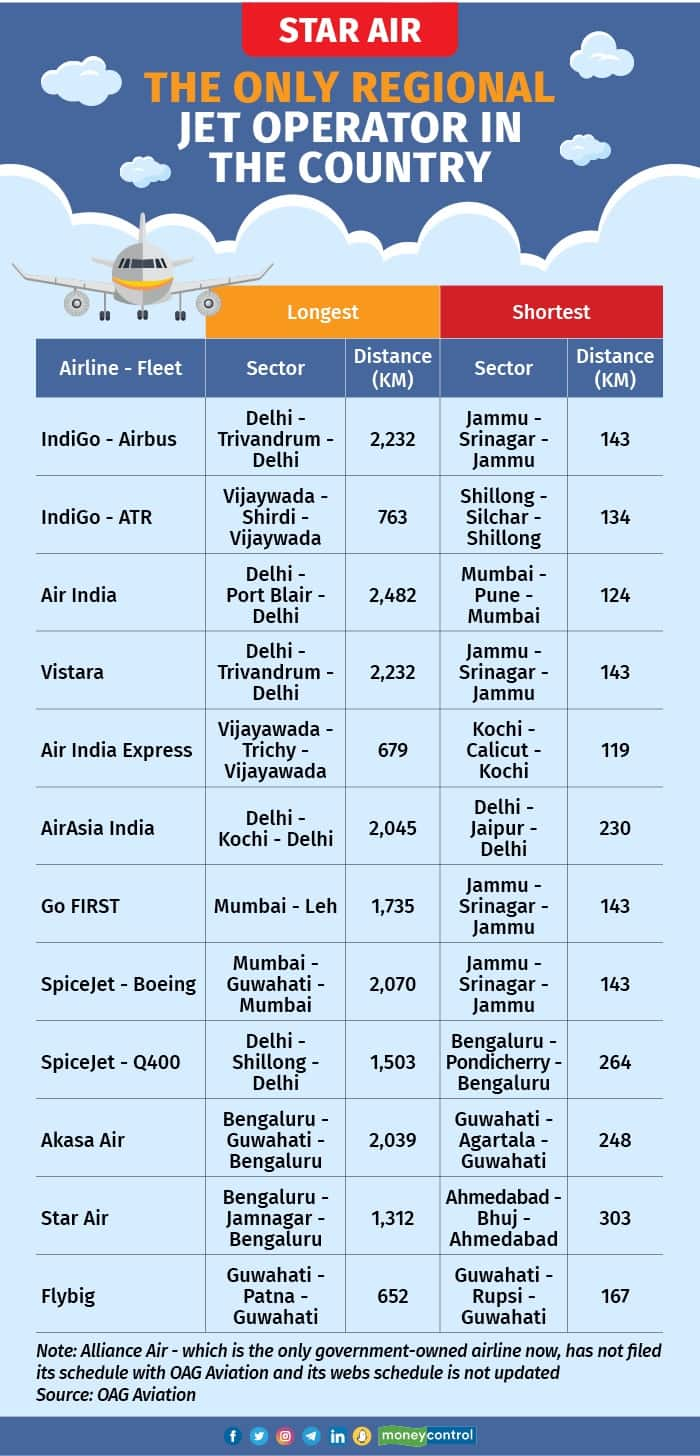



As the summer schedule for airlines kicked in on March 26 the regulator approved 22,907 weekly flights across all carriers. This translates to an average of 3,272 daily flights. The first day of the schedule started with 90 percent deployment of the approved schedule at 2,961 flights.
Since April 2019, the Indian aviation market has been going through one or the other challenge. It started with the fall of Jet Airways in April 2019, with the capacity being sucked out of the market before the peak season. As airlines inducted planes to get the capacity back, the world went into a lockdown.
The difficult period, which involved capacity caps as well as fare caps (on floor price and ceiling price), came to an end after the vaccination drive, drop in Covid cases and reduction in hospital admissions.
The sudden spurt in demand, largely pent up - acquired the name Revenge Tourism. Just when it looked as if all problems had disappeared, a few airlines started grappling with engine issues that led to a massive number of planes being grounded in India.
The passenger numbers, though, are holding steady even as the fares have gone up due to a paucity of capacity and the summer season looks exciting, even as news of Covid numbers come back at regular intervals. This season is also interesting in more ways than one. This is the last scheduling season for AirAsia India in its current form and last summer for Vistara, with the former set to merge with Air India Express by November and the latter set to merge with Air India by March 2024.
In this backdrop, it is interesting to see which routes airlines are flying and which are the longest and shortest routes in the country as well as for an airline, with data shared by OAG Aviation exclusively for this article.
The long and short in India
Tata group airlines hold the record for both. The longest route in the country is the Delhi - Port Blair route at 2,482 km. Air India operates this route thrice a week currently and the airline deploys the A320neo on this route.
The shortest route is operated by Air India Express with the B737NG aircraft. The thrice-weekly flight between Kochi and Calicut covers a distance of 119 km, narrowly beating the recently launched Mumbai-Pune flight which is a distance of 124 km.
With a sizable capacity of turboprops in the country, the shortest two routes are operated by narrow-body aircraft. The shortest turboprop route is operated by IndiGo between Shillong and Silchar, 134 km long, while the longest turboprop route in the country is a twice-a-week service by SpiceJet between Delhi and Silchar, which covers a distance of 1,503 km by a Q400 aircraft.
Airline-wise longest and shortest routes
IndiGo, the country’s largest carrier by fleet and domestic market share, operates the shortest turboprop route in the country (Shillong - Silchar - Shillong). The airline operates A320ceo, A320neo and A321neo on domestic routes along with the ATR 72-600s.
The recently launched route between Vijayawada and Shirdi on the ATR is the longest turboprop route for the airline at 763 km.
The Delhi - Trivandrum - Delhi routs is the longest for the airline at 2,232 kms, while Jammu - Srinagar - Jammu is its shortest at 143 km.
Incidentally, Vistara has the exact same routes as its shortest and longest. The shortest route is the same for Go FIRST as well as SpiceJet. For Akasa Air, the longest and shortest routes touch Guwahati, with the Bengaluru - Guwahati route being the longest while Guwahati - Agartala is the shortest.
Air India Express will have a much larger domestic operation when AirAsia India merges with it. For now, it operates the shortest flight in Indian skies, while its longest flight is between Vijayawada and Trichy at 679 km, shorter than the longest ATR flight of IndiGo! AirAsia India’s Delhi-Kochi-Delhi is its longest flight at 2,045 km while Delhi-Jaipur at 230 km is its shortest.
 Tail Note
Tail Note
IndiaOne, which started operations a few months ago, operates a small network out of the East with Cessna Caravan. Its shortest route is to Jeysore from Vizag (147 km), while that to Cooch Behar from Kolkata is its longest at 407 km.
India is characterised by unique features like traffic moving northwards to the hills in summer and southwards towards the beaches in winter. In addition to this, mandatory flying under Route Dispersal Guidelines make airlines fly routes they otherwise would not have flown.
Add to that the melee of RCS-UDAN, aimed at upgrading under-served regional airport, and the season ahead seems interesting as never before.
Discover the latest Business News, Sensex, and Nifty updates. Obtain Personal Finance insights, tax queries, and expert opinions on Moneycontrol or download the Moneycontrol App to stay updated!